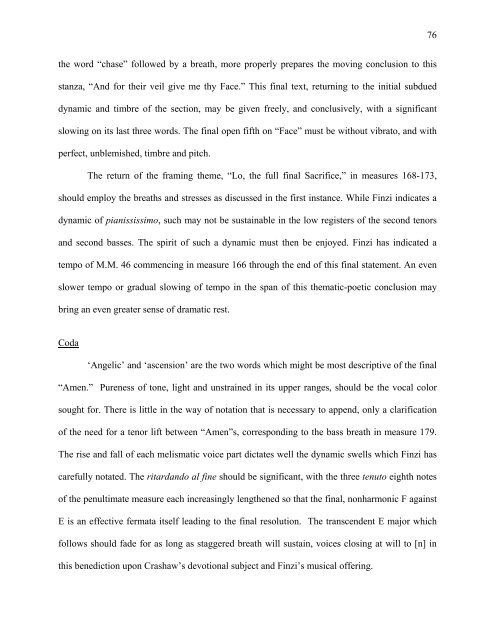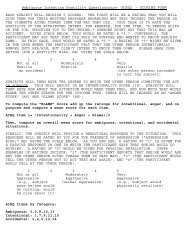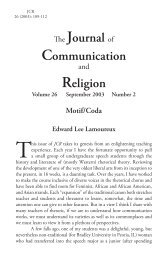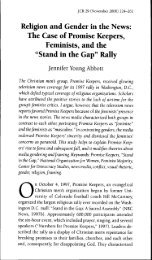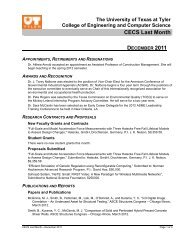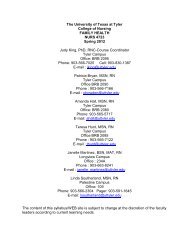"History, Analysis and Performance Considerations of Gerald Finzi's ...
"History, Analysis and Performance Considerations of Gerald Finzi's ...
"History, Analysis and Performance Considerations of Gerald Finzi's ...
You also want an ePaper? Increase the reach of your titles
YUMPU automatically turns print PDFs into web optimized ePapers that Google loves.
76the word “chase” followed by a breath, more properly prepares the moving conclusion to thisstanza, “And for their veil give me thy Face.” This final text, returning to the initial subdueddynamic <strong>and</strong> timbre <strong>of</strong> the section, may be given freely, <strong>and</strong> conclusively, with a significantslowing on its last three words. The final open fifth on “Face” must be without vibrato, <strong>and</strong> withperfect, unblemished, timbre <strong>and</strong> pitch.The return <strong>of</strong> the framing theme, “Lo, the full final Sacrifice,” in measures 168-173,should employ the breaths <strong>and</strong> stresses as discussed in the first instance. While Finzi indicates adynamic <strong>of</strong> pianississimo, such may not be sustainable in the low registers <strong>of</strong> the second tenors<strong>and</strong> second basses. The spirit <strong>of</strong> such a dynamic must then be enjoyed. Finzi has indicated atempo <strong>of</strong> M.M. 46 commencing in measure 166 through the end <strong>of</strong> this final statement. An evenslower tempo or gradual slowing <strong>of</strong> tempo in the span <strong>of</strong> this thematic-poetic conclusion maybring an even greater sense <strong>of</strong> dramatic rest.Coda‘Angelic’ <strong>and</strong> ‘ascension’ are the two words which might be most descriptive <strong>of</strong> the final“Amen.” Pureness <strong>of</strong> tone, light <strong>and</strong> unstrained in its upper ranges, should be the vocal colorsought for. There is little in the way <strong>of</strong> notation that is necessary to append, only a clarification<strong>of</strong> the need for a tenor lift between “Amen”s, corresponding to the bass breath in measure 179.The rise <strong>and</strong> fall <strong>of</strong> each melismatic voice part dictates well the dynamic swells which Finzi hascarefully notated. The ritard<strong>and</strong>o al fine should be significant, with the three tenuto eighth notes<strong>of</strong> the penultimate measure each increasingly lengthened so that the final, nonharmonic F againstE is an effective fermata itself leading to the final resolution. The transcendent E major whichfollows should fade for as long as staggered breath will sustain, voices closing at will to [n] inthis benediction upon Crashaw’s devotional subject <strong>and</strong> Finzi’s musical <strong>of</strong>fering.


